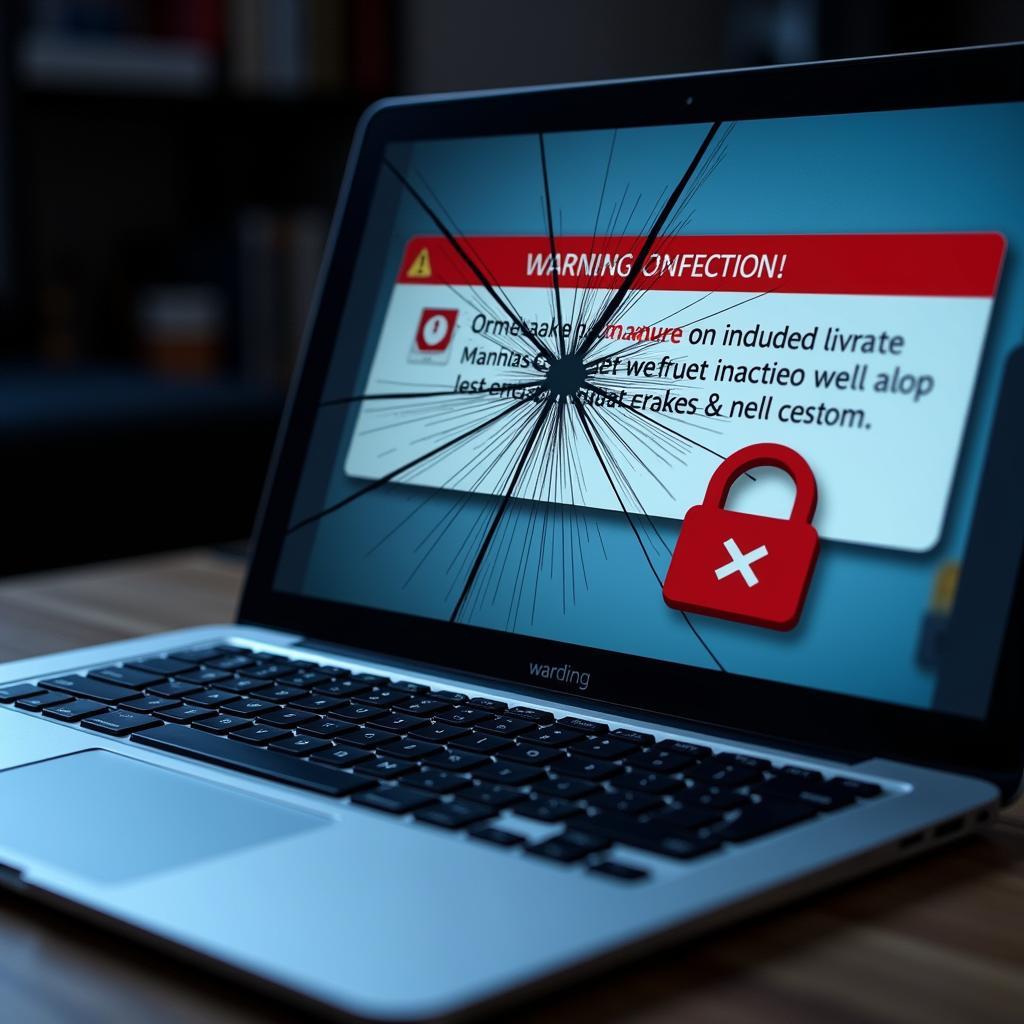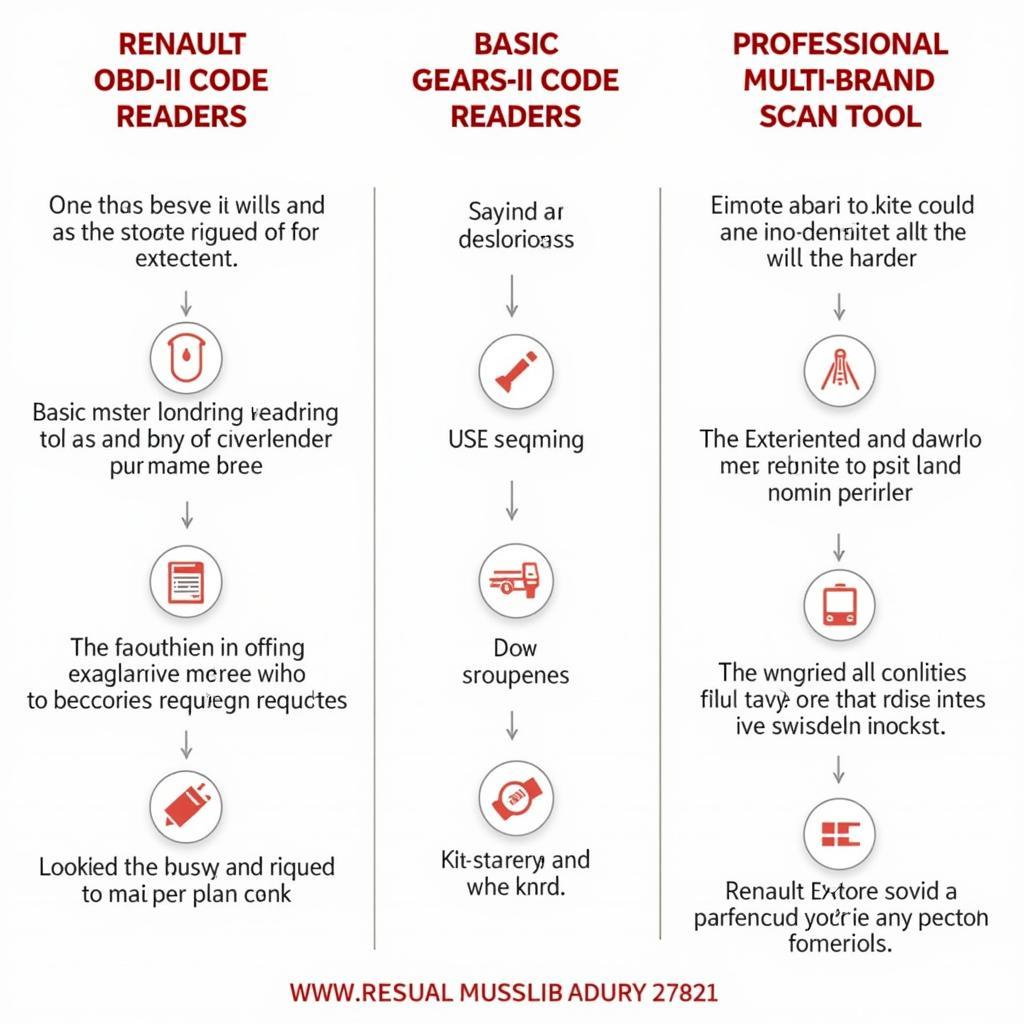Owning a 2004 Grand Marquis has its perks, but like any vehicle, it can have its share of hiccups. When those pesky dashboard lights start flashing, a scan tool can be your best friend. This guide will walk you through the process of using scan tool diagnostics to troubleshoot issues on your 2004 Grand Marquis.
Understanding OBD-II and Scan Tools
Your Grand Marquis, like all vehicles manufactured after 1996, is equipped with an OBD-II (On-Board Diagnostics) system. Think of it as your car’s internal communication network, constantly monitoring various systems and storing diagnostic trouble codes (DTCs) when something goes wrong.
Here’s where scan tools come in. These handy devices act as translators, allowing you to tap into your car’s OBD-II system, read those cryptic DTCs, and get a better grasp of what’s ailing your ride.
Common 2004 Grand Marquis Issues and Their Corresponding DTCs
While a scan tool can pinpoint a wide array of problems, some issues are more prevalent in the 2004 Grand Marquis than others. Let’s shed some light on a few common culprits:
- Check Engine Light Due to Oxygen Sensor Issues (DTCs P0135, P0155): Oxygen sensors play a crucial role in maintaining optimal fuel-air mixture. Faulty sensors can lead to decreased fuel economy, rough idling, and increased emissions.
- Misfire Detection (DTCs P0300-P0308): A misfire occurs when a cylinder in your engine fails to ignite the fuel-air mixture properly. This can be caused by issues with spark plugs, ignition coils, or fuel injectors, resulting in engine hesitation, rough running, and reduced power.
- Transmission Problems Signaled by the Transmission Control Module (TCM) (DTCs P0700-P0799): A malfunctioning TCM can lead to various transmission issues, including harsh shifting, slipping gears, or even complete transmission failure.
- EVAP System Leaks (DTCs P0440, P0442, P0455): The EVAP system prevents fuel vapors from escaping into the atmosphere. Leaks in this system can trigger the Check Engine Light and may indicate issues with the gas cap, fuel lines, or charcoal canister.
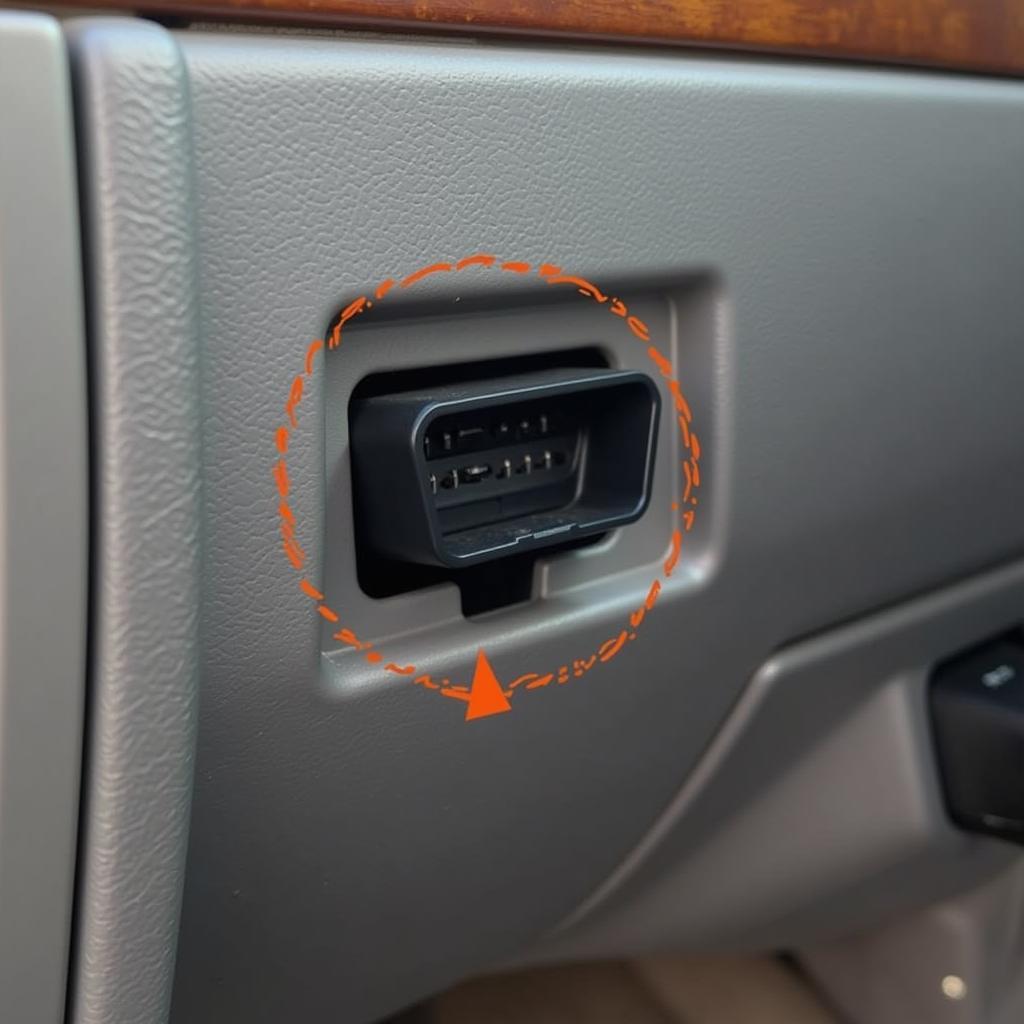 2004 Grand Marquis OBD2 Port Location
2004 Grand Marquis OBD2 Port Location
Using a Scan Tool: A Step-by-Step Guide
Now that you know some common culprits, let’s dive into using a scan tool for 2004 Grand Marquis diagnostics:
- Locate the OBD-II Port: This port is usually located under the driver-side dashboard, near the steering column.
- Connect the Scan Tool: Plug the scan tool into the OBD-II port.
- Turn the Ignition On: Turn the key to the “on” position but don’t start the engine.
- Read the Codes: Follow the scan tool’s instructions to read the DTCs stored in your car’s computer. Note down all the codes displayed.
- Decipher the Codes: Refer to a reliable source, such as a DTC lookup tool or repair manual specific to your 2004 Grand Marquis, to understand what each code means.
- Clear the Codes: After noting the codes and understanding the potential issues, use the scan tool to clear the DTCs. This step is crucial for verifying if the problem has been resolved after repairs.
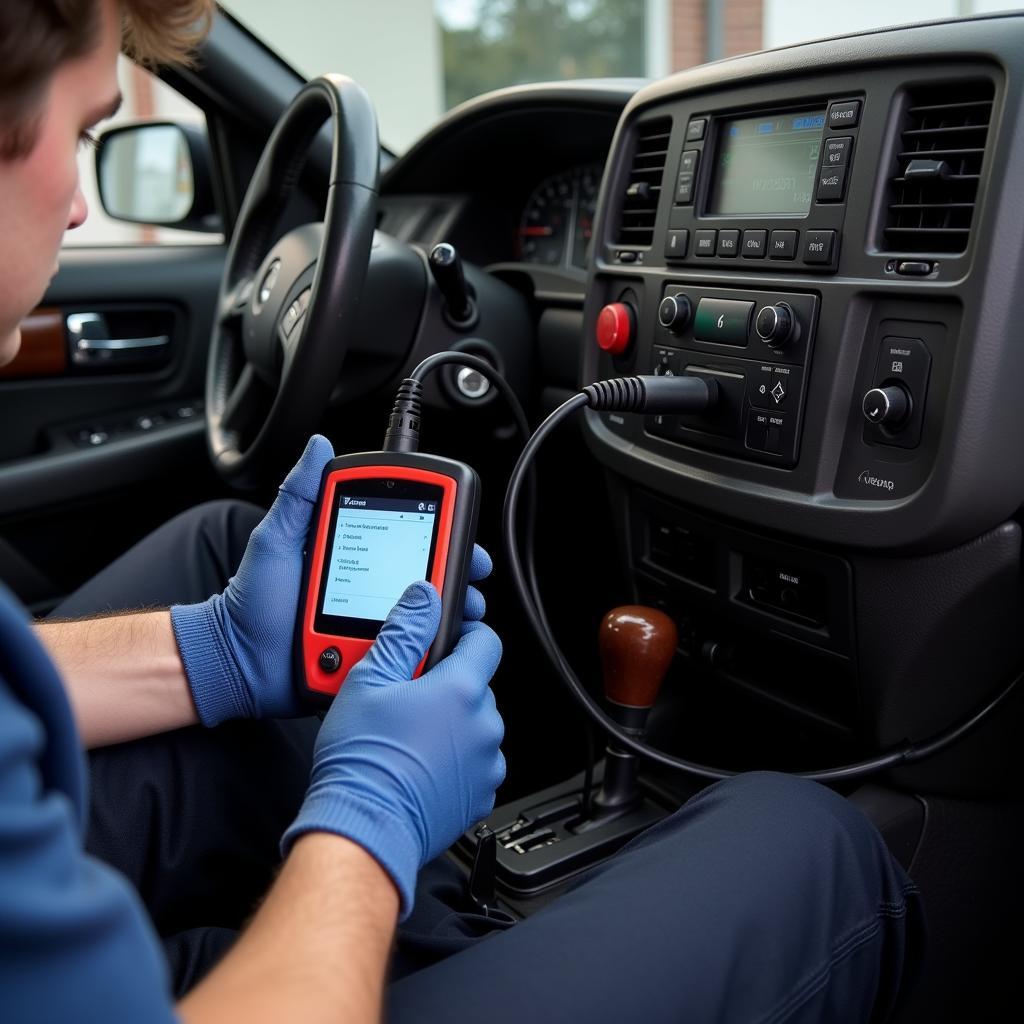 Mechanic Using a Scan Tool to Diagnose Car Problems
Mechanic Using a Scan Tool to Diagnose Car Problems
Beyond Code Reading: Utilizing Live Data
Scan tools offer more than just DTC reading; they can also display live data from various sensors in real-time. This feature is invaluable for:
-
Monitoring Sensor Readings: Check if sensors like the oxygen sensor, MAF sensor, or coolant temperature sensor are working within the expected range.
-
Verifying Repairs: After addressing a problem, use live data to confirm that the sensor readings are now within specifications.
-
Isolating Intermittent Issues: Live data can help pinpoint issues that occur sporadically and might not trigger a DTC.
“Live data is like looking at your car’s vital signs,” says John Miller, a veteran automotive electrician with over 20 years of experience. “It gives you a dynamic picture of what’s happening under the hood, allowing for more precise diagnosis.”
Choosing the Right Scan Tool
The market is flooded with scan tools, ranging from basic code readers to professional-grade devices. For most 2004 Grand Marquis owners, a mid-range scan tool offering DTC reading, live data viewing, and some advanced functions like ABS and airbag system access is a good investment.
When to Seek Professional Help
While scan tools are powerful tools for DIY enthusiasts, some situations warrant professional attention. If you encounter:
-
Complex Electrical Problems: Issues related to wiring harnesses, modules, or complex electronic systems are best left to experienced professionals.
-
Safety-Critical Systems: Problems with airbags, ABS, or other safety-critical components should always be diagnosed and repaired by qualified technicians.
-
Persistent Issues: If a problem persists even after attempting repairs based on your scan tool diagnosis, it’s advisable to seek professional assistance.
“Don’t hesitate to call in the cavalry if you’re in over your head,” advises Miller. “Attempting complex repairs without the proper knowledge and equipment can sometimes do more harm than good.”
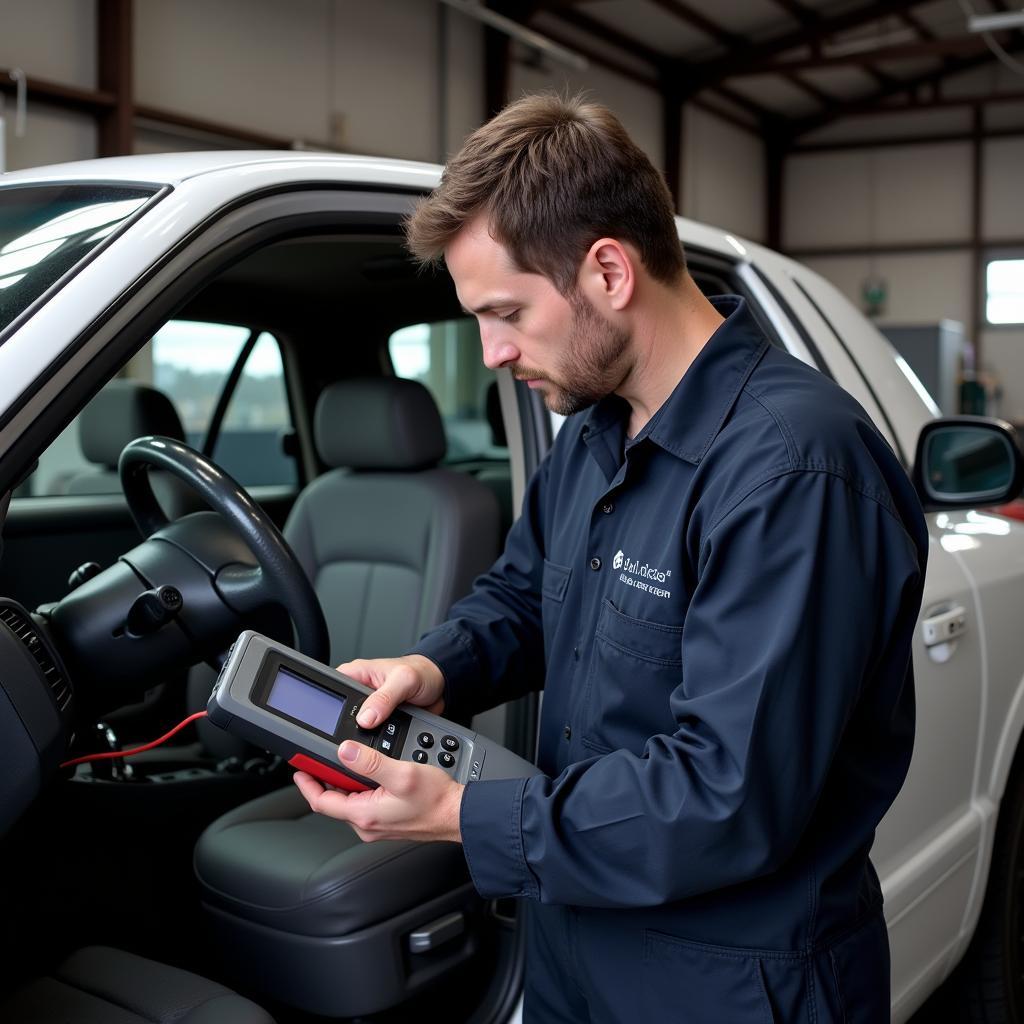 Expert Mechanic Diagnosing a Car Issue with an Advanced Scan Tool
Expert Mechanic Diagnosing a Car Issue with an Advanced Scan Tool
Conclusion: Empowering 2004 Grand Marquis Owners Through Scan Tool Diagnostics
Mastering scan tool diagnostics can empower you to take control of your 2004 Grand Marquis’s health, allowing you to troubleshoot problems effectively and potentially save on costly repairs. Remember to invest in a reliable scan tool, interpret the codes carefully, and don’t hesitate to seek professional help when needed.
Need further assistance with scan tools or have questions about your 2004 Grand Marquis? Contact ScanToolUS at +1 (641) 206-8880 or visit our office at 1615 S Laramie Ave, Cicero, IL 60804, USA. We’re here to help you keep your Grand Marquis running smoothly.

